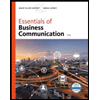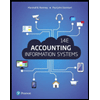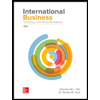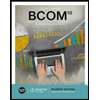safeBUSI4413-Assignment 3^04
.docx
keyboard_arrow_up
School
Mount Saint Vincent University *
*We aren’t endorsed by this school
Course
4413
Subject
Business
Date
Apr 3, 2024
Type
docx
Pages
3
Uploaded by CoachSquirrel3220 on coursehero.com
BUSI4413 – Compensation
Assignment 5&6
Chapter 6: Review Questions 3-4
3.
Why is there not more variation in core competencies between organizations? What does differ?
As stated in the textbook, most organizations use that same list of 20 core competencies. I think that this is likely because most of the popular competencies are essential for a successful workforce and business. Although organizations attempt to base their competencies off their mission and vision, most are still trying to run a successful business. Another reason I think that most organizations use the same of similar competencies, is the “don’t recreate the wheel” method. A lot of things in business is adopted from something that was previously successful. If
a one organizations in a similar industry has already designed their core competencies and it aligns well with your company, why wouldn’t you take them and tweak the specific activities or actions to your specific needs. If you take a close look at the top competencies, it makes sense that most organizations use them as they are what most employers would be seeking in their employees. Again, the book explains that the difference between the different organizations and their competencies are the actions associated with them that are related to the roles within the organization, and these are what create the competitive advantage. The Mission, vision and culture within the organization will influenced the competencies and which ones the organization choose to focus on. The organizations ability to think outside the box can also influence how standardized the competencies.
4.
If you were managing company’s compensation, how would you recommend that your company evaluate the usefulness of it’s job evaluation or person-based plans?
In order to achieve the next rank, employees must achieve a certain amount of required training,
have time-in experience, displayed potential of performing at the next rank, completed professional development, as well as have performed at a higher level than the majority. When the yearly ranking boards take place, employees supervisors sit down and compare employees in
a similar rank, and trade, to determine where each employee ranks based on all of the many variables mentioned above. They continue to try to tweak the ranking system as some argue that it can be biased based on popularity, but I feel as though it’s a fairly well rounded representation of the employees ability. It's important to design your compensation plan to support your mission. If you do this, your employees should be motivated to assist in getting you there. It’s also important to compare yourselves to similar organizations within the industry, and decide whether you are willing to pay
a higher amount to get the pick of the litter. As the textbook mentions, strive to maintain internal and external equity.
Chapter 7: Review Question #2 2.
What factors shape an organization’s external competitiveness?
As displayed in Exhibit 7.3 the following items shape external competitiveness:
If the labour market is screaming for employment, than the external competitiveness would be heightened as employers would need to differentiate themselves from their competitors. On the other hand, if there was a surge in technology that replaced the requirement for human resources, the competitiveness would lessen as employees would be forced to take whatever they were offered
due to the lack of jobs available. Market factors will of course influence the rate of employment needed to produce the demanded products, and the degree of competitiveness within your industry will effect the external competitiveness. Finally, the organizational factors will influence external competitiveness. If an organization is large and thriving, it may be able to offer that competitive edge of increased pay or benefits, where as if it’s a Mom&Pop shop with less than ten employees and minimal revenue, it would be unable to consider raising it’s wages. The more tech saavy the organization, the more likely that they will be required to pay higher than those without, and so on.
Case Question #2
2. What forms of pay would you recommend? Again, state your rationale.
Immediately, I would feel the need to research industry standards and competitors' different compensation offerings. Exhibit 7.1 displays an analysis of the market position of a company’s pay strategy for different jobs (both base pay and compensation). I would want to have that from any company offering comparable products. It’s also important to analyze the breakdown of base pay, benefits and other forms of compensation and compare to others. I would also review any Compensation surveys that I found related to the field of work.
Your preview ends here
Eager to read complete document? Join bartleby learn and gain access to the full version
- Access to all documents
- Unlimited textbook solutions
- 24/7 expert homework help
Related Questions
"How can a company effectively utilize CRM software to improve customer satisfaction and retention, and what are some key features and best practices that should be considered during implementation?"
arrow_forward
You are the Information Systems (IS) Manager of Ramsys IT Solutions. The Board of Directors of your company has decided that your company should purchase a new Information System software for its use.
(b). Describe three strategic business objectives/benefits that your organization can derive from its investments in, and use of, the proposed Information System.
arrow_forward
This discussion is associated with the Navigate 2 Scenario - Episode 4: How are we doing?
It’s time for a marketing audit! The Health Care System wants to see how responsive they are to market needs and preferences, and if their marketing strategies are showing a good return on investment. You have been brought in as an objective party to perform this audit. During this episode, you need to identify the right people to be in the interviews and choose the best questions to ask from the following categories. Identify who the stakeholders are in the interview and who are the best people to ask questions regarding the following categories (choose 3 categories). What are the questions you will ask?
Market and market segments
The organization
Competitors
Products and services
Price
Promotion
Channels of distribution
arrow_forward
I need a detailed outline of a report about a future issues in the real estate/ property management industry.
Report must be about future issues in the real estate/ property management industry. Consult an in-depth article from a business publication on a topic or issue about this industry. Such topics are often discussed in year-end or year-beginning issues of publications or business programs. Examples of topics might be things like increase in cost of living, rising inflation and labor shortages (at least two out of the three topics should be discussed).The outline must describe the issue and its potential impacts on a real estate company.
This assignment must be one to two pages long, and it should be a detailed outline, with clear topic sentences, sources of information, and key points highlighted. Outlines have specific formatting and layout requirements.
The point is to have a clear direction and to demonstrate an understanding of the topic researched/ discussed.
arrow_forward
review the 3M organization
-Explain how the forces in the general environment impact the firm's operations;
-Describe the structure of the industry;
-Identify and describe the firm's major competitors and the basis of their competitiveness;
-Apply Porter's five forces model
please provide all references
arrow_forward
Can I receive assistance with the below two questions, please
PART A: Several years ago, Hurricane Gilbert destroyed thousands of acres of banana in Jamaica. Farmers whose crops were destroyed by the hurricane were much worse off, but farmers whose crops were not destroyed benefited from the hurricane. Why did this occur? What information would you need about the market for bananas in order to assess whether farmers as a group were hurt or helped by the floods?
PART B: Explain why the following might be true: A drought in the Caribbean raises the total revenue that producers receive from the sale of coffee, but a drought only in Grenada reduces the total revenue that Grenadian producers receive.
Ensure that you define any key terms used in your discussion.
arrow_forward
“Multisource feedback is a tool used to obtain feedback from individuals at various levels of the organization. Frequently, the target employee (the one receiving the feedback) selects the individuals who will provide feedback. What are some potential drawbacks of allowing the target employee to select his or her raters? Should the target employee’s supervisor be responsible for selecting raters? How else could raters be determined? How might we incorporate technology into this process?”
arrow_forward
Below is information taken from the course unit, could you input some informtion into the answer? Also, could you provide references in apa 7th edition?
Global SourcesGlobal sourcing is essential to the production of goods and services. Input is acquiredfor production from various sources globally based on the organizational need.Global sourcing refers to buying the raw materials or components that go into acompany’s products from around the world, not just from the headquarters’ country(Carpenter & Dunung, 2011).
On the other hand, using multiple suppliers gives a company more flexibility. Forinstance, if there’s a natural disaster or other disruption at one of their suppliers,the company can turn to its other suppliers to meet its needs. For example, whenHurricane Mitch hit Honduras with 180-mile-per-hour winds, 70 to 80 percent ofHonduras’s infrastructure was damaged and 80 percent of its banana crop was lost.Both Dole Food Company and Chiquita bought bananas from Honduras,…
arrow_forward
a) Which items load onto which factors? Can you name them based on the items that load onto them? (150 words)
Rotated Factor Matrix
Factor
Items
1
2
3
4
5
The appearance of the physical facility
.695
-.054
.153
.119
.193
Communication material
.823
-.012
.096
.045
-.002
Ability to perform the promised services
.052
.193
.718
.210
-.023
Willingness to help customers
.270
-.013
.052
.232
.586
Knowledge and courtesy of employees
.018
.769
-.046
.187
.005
Ability to convey trust and confidence
-.028
.678
.035
.024
.090
Caring
.172
.160
.215
.604
.155
Ability to accurately accomplish
.174
.009
.640
.107
.127
Provide prompt services
.170
-.210
.188
-.044
.720
Individual attention to customer…
arrow_forward
This week we will return one last time to the sharing economy. Your assignment is to develop the concept for a new business for this market space. For example, you may decide that there ought to be a business coordinating the sharing of lawn mowers. (You don’t have to pull a Fred Smith on this assignment.)
1) There are two main deliverables. First, you’re to work out the value proposition including target market, problem addressed, your solution, and the points of difference between your solution and what’s currently available.
2) Second, you’re to specify how your business might attempt to capture some portion of the value generated and answer whether that value would be sufficient to build a viable business.
Note:-
Do not provide handwritten solution. Maintain accuracy and quality in your answer. Take care of plagiarism.
Answer completely.
You will get up vote for sure.
arrow_forward
Distinguish between different business-level strategies that SPAR can use to 10 achieve its strategic goals
arrow_forward
Please do not give solution in image formate thanku
ReadThomas L. Friedman (2005) The world is flat a brief history of twenty-first century.
Are the theories from Friedman still valid in 2023? Give an example. Also describe three things that could be done in a persons life to prepare to excel in what friedman describes as a flattening world
arrow_forward
How do you propose a framework for how HP could address expected and unexpected disputes? How do you include plans for how you would utilize the following to resolve disputes?
arrow_forward
As a young Graduate who has been employed by Kyekyewere Limited who operates four different types of Businesses in four different industries as follows:a) Cash Cowb) Starc) Question Mark / Problem child andd) DogsWith the knowledge skills and competencies that you have acquired as a Graduate who studied Management of Small and Medium Enterprise Advise Management about these Investment Portfolios in the various industry (s). Your advice should cover the followinga) Explain to Management what Cash cow, Star , Question mark and Dogs industries represent.b) Advise Management on which firm(s) demand further investment and why? c) Advise Management on which firm(s) to close down and why?
arrow_forward
Can you assist with the below assignment?Environmental Issues Faced by Business and SocietyResearch and explain the importance of an environmental issue (fracking, hazardous waste disposal, oil pipeline leaks, deforestation, etc.) faced by business and society.Additionally, describe at least two strategic approaches organizations are using to respond to the issue.The requirements below must be met for your paper to be accepted and graded:Write between 750 – 1,250 words (approximately 3 – 5 pages) using Microsoft Word in APA style, see example below.Use font size 12 and 1†margins.Include cover page and reference page.At least 80% of your paper must be original content/writing.No more than 20% of your content/information may come from references.Use at least three references from outside the course material, one reference must be from EBSCOhost. Text book, lectures, and other materials in the course may be used, but are not counted…
arrow_forward
A decision support system (DSS) is an information system that assists a company in making decisions that involve judgment, determination, and a set of actions. Describe the DSS's many elements. What role does DSS play in the transformation of the IT industry?
arrow_forward
An automobile company wants to invest in Pakistan, its top management decided to get the users to feedback about existing cars available in the market. So, they can make plans to invest and facilitate the user's demands. You are the senior manager, responsible for this task. How will you get the data from users? If you circulate the form online, which type of questions would you select (Open or Closed)? Justify this answer with a proper example. If you have another option, please give the details with an example.
arrow_forward
Could you explain in more detail a paragraph form for each challenge using the PESTEL Analysis Diagram for example under challenge 1. Financial sustainability:
Political - what information would you put here in a paragraph form
Economic: what information would you put here in a paragraph form
Social: what information would you put here in a paragraph form
Legal: what information would you put here in a paragraph form
Environmental: what information would you put here in a paragraph form
Technological: what information would you put here in a paragraph form
The same for challenge 2. Staffing and workforce development
arrow_forward
In today's current economy as budgets shrink, organizations have to make tough decisions about operational vs. support activities and their related costs. As a support department, Training and Development can be especially vulnerable to cost cutting measures.
assume that you are a Training and Development Director and your CEO has just informed you that many of your current training programs (including management development programs) are being cut. Second, determine what quantitative and qualitative metrics that you should gather prior to responding to this information.
Give a "rebuttal" response in which you inform the CEO that this is not a good decision for the company (hint: be sure to provide justification in your response).
arrow_forward
Create a PowerPoint presentation with the following 4 elements:
Provide an overview and discuss the function of 1 publicly financed healthcare program in the United States.
How has that program evolved and influenced the entire U.S. healthcare system?
What are some of the accomplishments and challenges for that program?
What does that program do to focus on health prevention and performance?
arrow_forward
1. What are two operational problems or issues in the banking & financial Services sector?
2. Conduct a preliminary review of case studies, news articles, etc. on both of the operational problems or issues that you identified in (1) above.
3. Base on your preliminary research findings, choose one of the operational problems issues and: explain why we should be concern about or interested in looking at that operational problem/issue
arrow_forward
good day tutor! im here to cure my doubts
i hv 1 question. please kindly help solve.
Required:
selected company: Pfizer Inc.
1. Prepare a PESTLE analysis for Pfizer Inc. (4 points for each component–political, economic, social, technological, legal, environment). Provide at least 6 relevant examples.
It is suggested to take into consideration about the current situation happening nationally and globally. (such as Covid19/economic recession/all the downfall & downturns happened due to Covid19)
Thats all. tutor, i hope for a clear, precise & easy-to-understand explantions. (non-plagiarized answers)
thanks tutor! much appreciated~
arrow_forward
Enter a suitable heading in the title field; and
Explain how logistics differs from supply chain management;
Discuss how logistics and supply chain management can contribute towards managements’ returns.
Explain why you think investing in a logistics and supply chain management function (department) will benefit an organisation.
arrow_forward
Read the instructions in full before you attempt to answer.
In section 1 below, a total of eight different market segments for the cold beverage market have been provided (Note: For the purpose of this discussion activity, let’s assume that the cold beverage market includes fizzy drinks (sodas), juice, energy drinks, milk-based drinks, yoghurt-based drinks, water, sports drinks, and so on.).
Read section 1 statements, then read the task in section 2.
Section 1:
Quick Overview of Each Market Segment
The ‘Really thirsty’: This group of consumers is seeking a fairly straightforward functional benefit from their consumption of a beverage.
The ‘On the go’: The on-the-go market segment is a busy group of consumers who tend to eat and drink while they are traveling.
The ‘Need a boost’: This market segment consists of those consumers are feeling rundown or tired during the day.
The ‘Variety seekers’: Variety seekers are consumers that have limited brand loyalty and will consume a broader…
arrow_forward
Match each source of resistance to change with the best way to overcome resistance from this source.
Organizational factors Choose...
Individuals
Choose...
Leaders
Choose...
arrow_forward
Read the Case attached. Follow the AMA 8 Step case process and focus on steps 2,3,4 and 6. And incorporate how to answer according to the steps provided.
Strategic Case Analysis
Using the AMA (American Management Association) 8 step case analysis process
The Basic Problem Solving or Case Analysis Process
Applying the Process
The Basic Problem Solving or Case Analysis Process
You have all engaged in the process of basic problem solving numerous times in your life as well as in your academic career. However, since you will be utilizing this process extensively in this course, it is appropriate to spend some time reviewing and discussing it. Whether this process is being applied to a simple, routine decision or an immensely complex decision the steps are the same. It is what one does within each of those steps that vary. To begin, let's review the process.
Step 2 - Determining the Root Problem & Step 3 - Identifying the Problem Components The most difficult and…
arrow_forward
Pick one (1) of the topics below and discuss its importance as a consideration when writing a business case:
Problem Identification: Emphasize the significance of accurately identifying and defining the problem or opportunity that the business case addresses. Discuss methods for conducting a thorough problem analysis and explain why a clear problem statement is crucial for building a persuasive business case.
Research and Data Analysis: Discuss the importance of comprehensive research and data analysis to support the business case. Explore the types of data and information that should be gathered, such as market research, financial data, industry trends, and competitive analysis. Encourage students to discuss methods for collecting and analyzing relevant data effectively.
Cost-Benefit Analysis: Explain the concept of cost-benefit analysis and its significance in a business case. Discuss different approaches to quantifying costs and benefits, including financial metrics such as…
arrow_forward
Direction: Do what is instructed below. Write your answers in your notebook.
One of the goals of business is to cater the needs and wants of the customers and make
them satisfied of the goods & services that a business provides in order for them to
share their experiences for the growth and sustainability of the business operation.
Now, I want you to create your own product or services that best suits to the needs of
our present situation which we are in the midst of the global pandemic.
Requirement:
Create your own product using the Five (5) Product Levels by Kotler. Use the table below:
Product levels
Question
Product or services you Draw the product you want Drawing here:
Answer
can create and offer to to offer
your customers
bas
Core benefit of the State
the
fundamental
product
benefit that you can offer to
satisfy them
Generic product
State the basic version of the
product
the
features
necessary for it to function
State the product set of
Expected product
features that the…
arrow_forward
Name and discuss 3 primary types of objections customers typically raise:
1. Price objection: Customer believes quoted price is too high.
2. Product Objection: Customer voices concerns about some element of product or service or customer might not be familiar with the product.
3. Time objection: Customer considering buying, but needs more time or customer has no intention of buying and wants to get rid of salesperson.
Imagine you are newly employed as an Assistant Vice President (AVP) of Corporate Sales at a marketing organization.
In the upcoming week, your team will be hosting a presentation for a new line of Tennis Rackets for 75 prospects. As you are aware, prospects are going to raise objections about this product.
Using the compensation technique (admits the objection is valid but also discusses other benefits). and the acknowledgment technique (admits the objection is valid) discuss how one can apply these techniques to overcome objections. Why? Please be mindful to use…
arrow_forward
Assume General Mills has to decide how to invest millions of dollars to try to expand its dessert and yogurt businesses. To allocate this money between these two businesses, what information would General Mills like to have?
arrow_forward
SEE MORE QUESTIONS
Recommended textbooks for you

BUSN 11 Introduction to Business Student Edition
Business
ISBN:9781337407137
Author:Kelly
Publisher:Cengage Learning

Essentials of Business Communication (MindTap Cou...
Business
ISBN:9781337386494
Author:Mary Ellen Guffey, Dana Loewy
Publisher:Cengage Learning

Accounting Information Systems (14th Edition)
Business
ISBN:9780134474021
Author:Marshall B. Romney, Paul J. Steinbart
Publisher:PEARSON


International Business: Competing in the Global M...
Business
ISBN:9781259929441
Author:Charles W. L. Hill Dr, G. Tomas M. Hult
Publisher:McGraw-Hill Education

Related Questions
- "How can a company effectively utilize CRM software to improve customer satisfaction and retention, and what are some key features and best practices that should be considered during implementation?"arrow_forwardYou are the Information Systems (IS) Manager of Ramsys IT Solutions. The Board of Directors of your company has decided that your company should purchase a new Information System software for its use. (b). Describe three strategic business objectives/benefits that your organization can derive from its investments in, and use of, the proposed Information System.arrow_forwardThis discussion is associated with the Navigate 2 Scenario - Episode 4: How are we doing? It’s time for a marketing audit! The Health Care System wants to see how responsive they are to market needs and preferences, and if their marketing strategies are showing a good return on investment. You have been brought in as an objective party to perform this audit. During this episode, you need to identify the right people to be in the interviews and choose the best questions to ask from the following categories. Identify who the stakeholders are in the interview and who are the best people to ask questions regarding the following categories (choose 3 categories). What are the questions you will ask? Market and market segments The organization Competitors Products and services Price Promotion Channels of distributionarrow_forward
- I need a detailed outline of a report about a future issues in the real estate/ property management industry. Report must be about future issues in the real estate/ property management industry. Consult an in-depth article from a business publication on a topic or issue about this industry. Such topics are often discussed in year-end or year-beginning issues of publications or business programs. Examples of topics might be things like increase in cost of living, rising inflation and labor shortages (at least two out of the three topics should be discussed).The outline must describe the issue and its potential impacts on a real estate company. This assignment must be one to two pages long, and it should be a detailed outline, with clear topic sentences, sources of information, and key points highlighted. Outlines have specific formatting and layout requirements. The point is to have a clear direction and to demonstrate an understanding of the topic researched/ discussed.arrow_forwardreview the 3M organization -Explain how the forces in the general environment impact the firm's operations; -Describe the structure of the industry; -Identify and describe the firm's major competitors and the basis of their competitiveness; -Apply Porter's five forces model please provide all referencesarrow_forwardCan I receive assistance with the below two questions, please PART A: Several years ago, Hurricane Gilbert destroyed thousands of acres of banana in Jamaica. Farmers whose crops were destroyed by the hurricane were much worse off, but farmers whose crops were not destroyed benefited from the hurricane. Why did this occur? What information would you need about the market for bananas in order to assess whether farmers as a group were hurt or helped by the floods? PART B: Explain why the following might be true: A drought in the Caribbean raises the total revenue that producers receive from the sale of coffee, but a drought only in Grenada reduces the total revenue that Grenadian producers receive. Ensure that you define any key terms used in your discussion.arrow_forward
- “Multisource feedback is a tool used to obtain feedback from individuals at various levels of the organization. Frequently, the target employee (the one receiving the feedback) selects the individuals who will provide feedback. What are some potential drawbacks of allowing the target employee to select his or her raters? Should the target employee’s supervisor be responsible for selecting raters? How else could raters be determined? How might we incorporate technology into this process?”arrow_forwardBelow is information taken from the course unit, could you input some informtion into the answer? Also, could you provide references in apa 7th edition? Global SourcesGlobal sourcing is essential to the production of goods and services. Input is acquiredfor production from various sources globally based on the organizational need.Global sourcing refers to buying the raw materials or components that go into acompany’s products from around the world, not just from the headquarters’ country(Carpenter & Dunung, 2011). On the other hand, using multiple suppliers gives a company more flexibility. Forinstance, if there’s a natural disaster or other disruption at one of their suppliers,the company can turn to its other suppliers to meet its needs. For example, whenHurricane Mitch hit Honduras with 180-mile-per-hour winds, 70 to 80 percent ofHonduras’s infrastructure was damaged and 80 percent of its banana crop was lost.Both Dole Food Company and Chiquita bought bananas from Honduras,…arrow_forwarda) Which items load onto which factors? Can you name them based on the items that load onto them? (150 words) Rotated Factor Matrix Factor Items 1 2 3 4 5 The appearance of the physical facility .695 -.054 .153 .119 .193 Communication material .823 -.012 .096 .045 -.002 Ability to perform the promised services .052 .193 .718 .210 -.023 Willingness to help customers .270 -.013 .052 .232 .586 Knowledge and courtesy of employees .018 .769 -.046 .187 .005 Ability to convey trust and confidence -.028 .678 .035 .024 .090 Caring .172 .160 .215 .604 .155 Ability to accurately accomplish .174 .009 .640 .107 .127 Provide prompt services .170 -.210 .188 -.044 .720 Individual attention to customer…arrow_forward
- This week we will return one last time to the sharing economy. Your assignment is to develop the concept for a new business for this market space. For example, you may decide that there ought to be a business coordinating the sharing of lawn mowers. (You don’t have to pull a Fred Smith on this assignment.) 1) There are two main deliverables. First, you’re to work out the value proposition including target market, problem addressed, your solution, and the points of difference between your solution and what’s currently available. 2) Second, you’re to specify how your business might attempt to capture some portion of the value generated and answer whether that value would be sufficient to build a viable business. Note:- Do not provide handwritten solution. Maintain accuracy and quality in your answer. Take care of plagiarism. Answer completely. You will get up vote for sure.arrow_forwardDistinguish between different business-level strategies that SPAR can use to 10 achieve its strategic goalsarrow_forwardPlease do not give solution in image formate thanku ReadThomas L. Friedman (2005) The world is flat a brief history of twenty-first century. Are the theories from Friedman still valid in 2023? Give an example. Also describe three things that could be done in a persons life to prepare to excel in what friedman describes as a flattening worldarrow_forward
arrow_back_ios
SEE MORE QUESTIONS
arrow_forward_ios
Recommended textbooks for you
 BUSN 11 Introduction to Business Student EditionBusinessISBN:9781337407137Author:KellyPublisher:Cengage Learning
BUSN 11 Introduction to Business Student EditionBusinessISBN:9781337407137Author:KellyPublisher:Cengage Learning Essentials of Business Communication (MindTap Cou...BusinessISBN:9781337386494Author:Mary Ellen Guffey, Dana LoewyPublisher:Cengage Learning
Essentials of Business Communication (MindTap Cou...BusinessISBN:9781337386494Author:Mary Ellen Guffey, Dana LoewyPublisher:Cengage Learning Accounting Information Systems (14th Edition)BusinessISBN:9780134474021Author:Marshall B. Romney, Paul J. SteinbartPublisher:PEARSON
Accounting Information Systems (14th Edition)BusinessISBN:9780134474021Author:Marshall B. Romney, Paul J. SteinbartPublisher:PEARSON
 International Business: Competing in the Global M...BusinessISBN:9781259929441Author:Charles W. L. Hill Dr, G. Tomas M. HultPublisher:McGraw-Hill Education
International Business: Competing in the Global M...BusinessISBN:9781259929441Author:Charles W. L. Hill Dr, G. Tomas M. HultPublisher:McGraw-Hill Education

BUSN 11 Introduction to Business Student Edition
Business
ISBN:9781337407137
Author:Kelly
Publisher:Cengage Learning

Essentials of Business Communication (MindTap Cou...
Business
ISBN:9781337386494
Author:Mary Ellen Guffey, Dana Loewy
Publisher:Cengage Learning

Accounting Information Systems (14th Edition)
Business
ISBN:9780134474021
Author:Marshall B. Romney, Paul J. Steinbart
Publisher:PEARSON


International Business: Competing in the Global M...
Business
ISBN:9781259929441
Author:Charles W. L. Hill Dr, G. Tomas M. Hult
Publisher:McGraw-Hill Education
